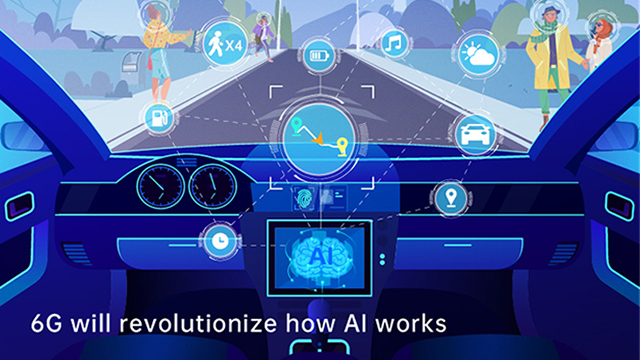6G AI-Native Communication Networks
AI-Centric NextG Wireless
Developing Full Stack, Secure, Wireless Intelligence in Pursuit of the NextG
Developing Full Stack, Secure, Wireless Intelligence in Pursuit of the NextG
With the successful deployment of commercial 5G networks, the wireless research community must now turn their focus to what lies beyond: evolving 5G as we march towards defining what 6G will encompass. While it is still early, and research efforts will undoubtedly be broad, consensus has begun to form amongst the community that two topics will form the bed rock of a 6G network: i) Terahertz (THz) communications and ii) Artificial Intelligence / Machine Learning (AI/ML) driven networking stacks.
The inclusion of Millimeter Wave (mmWave) bands in 5G will unlock new bandwidth hungry applications and force us to robustly solve many of the challenges of directional communications including beam management, reduced coverage, and unreliable links. These same challenges will undoubtedly plague future THz networks as well, likely to an even larger degree. Therefore, many of the research efforts of the Center for Wireless Communications (CWC) in the coming years will be grounded in solving the projected challenges of THz, utilizing mmWave radios, where the technologies are mature enough to enable systems level studies in the field, along with simulation based modeling of THz networking specifically. With this drive towards higher frequency ranges comes increasing complexity of managing network configurations.
THz will undoubtedly accelerate the ongoing trends of network densification, exposing new challenges, and opportu-
nities, of cooperation amongst nodes. Many of the available optimizations will be site-specific, they will take advantage of the unique geometry around radios that affect their propagation environment, and will have to adapt over time as this geometry changes. The majority of applications served by the next generation of networks will indubitably be data-heavy, bringing unprecedented peak throughput and latency requirements; while they can avail themselves of the upside of THz networks they must be able to quickly adapt to the inevitable degradation of network performance. The ubiquitous deployment of AI/ML in recent years has shown that these techniques are ready to solve real world challenges at scale. Therefore, the CWC will explore how AI/ML can bring adaptivity to every layer of the networking stack, enabling radio deployments to autonomously evolve over time as their environments, and the applications these networks enable, change.
The CWC envisions a wireless future where multiple nodes, protocol layers, and spectrum ranges harmoniously self-optimize to transparently present network users with a seamless experience on the next generation of applications. In pursuit of this future, we have developed a research thrust for nearly every layer of the wireless stack (with optimizations often spanning multiple layers) focusing first and foremost on mmWave and beyond frequency ranges. In research thrust 1, we explore how Deep Learning (DL) can mitigate sub-optimal transceiver designs forced upon us by Size, Weight, Power, and Cost (SWaP-C) constraints. Research thrust 2 explores the usage of AI/ML techniques for controlling mesh networks and Smart Surfaces that provide cost and power effective coverage expansions. Research thrust 3 explores the relationships between application Quality of Experience (QoE) and reliability of individual links by devising intelligent distribution of application data across a plethora of paths created by advanced beam management and mesh networking techniques. In research thrust 4, we explore how the network and its applications can quickly and jointly adapt to changing network state to dynamically match network requirements to what is realistically achievable under current circumstances while maintaining high application QoE. Finally in Research thrust 5, we explore the security risks introduced by disaggregated Radio Access Network (RAN), and more specifically, discovery of any new vulnerabilities resulting from the AI-centric design of NextG wireless.
We believe the aforementioned research thrusts will push the community forward towards developing a holistic approach to network intelligence, enabling THz through solving system level challenges, and that our discoveries will aid in uncovering the research questions that remain to be asked in the pursuit of 6G.
- Sun, K., Xia, C., Zhang, X., Chen, H., & Zhang, C. J. (2024). Multimodal Daily-Life Logging in Free-living Environment Using Non-Visual Egocentric Sensors on a Smartphone. Proceedings of the ACM on Interactive, Mobile, Wearable and Ubiquitous Technologies, 8(1) See full publication
- Chen, Xingyu, and Xinyu Zhang. "Rf genesis: Zero-shot generalization of mmwave sensing through simulation-based data synthesis and generative diffusion models." Proceedings of the 21st ACM Conference on Embedded Networked Sensor Systems. 2023. See full publication
